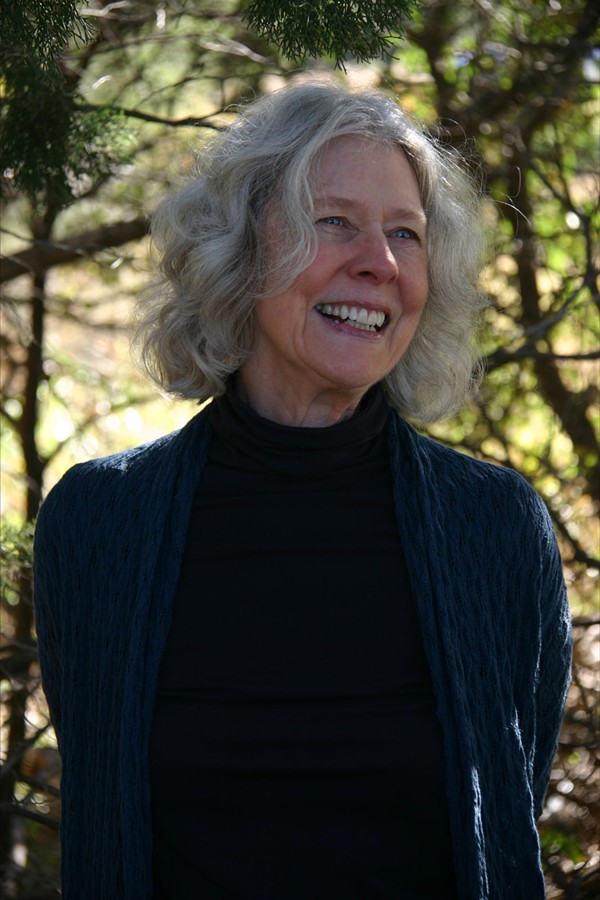
by Alan Feldman
Wendy Barker, whose sixth full-length collection of poems, One Blackbird at a Time (BkMk Press, $13.95), won the John Ciardi Prize for Poetry, has been teaching for many years at the University of Texas San Antonio where she is currently poet-in-residence and professor. Her new book focuses on her experiences as a teacher there and much else besides, including personal memories often connected to the texts she’s teaching. Barker, who holds a literature Ph.D. from UC Davis and is the author of critical studies of Emily Dickinson and Ruth Stone, is the kind of writer we may not find as often in the future––someone who’s both a literature scholar and a poet.
When I first came upon one of Barker’s poems about her teaching, I wrote to her to say that I’d never seen any poet better describe the work we literature teachers do. Now that a whole book of such poems has appeared, it seems obvious that many of us––poets who are professors, that is––had the same opportunity as she to mine this rich project, and yet, to my knowledge, none has. Barker’s book is so rich with the texture of our complicated mental lives––one foot in literature, another in the classroom, and the mind steadily focused on the lyric possibility of all that is happening—that I felt she’d written the poems about my working life as well as her own.
This conversation was conducted via email in February of 2016.
Alan Feldman: Tell me, did this sequence of poems about teaching start with a single poem, with others coming later, or did you think it would be a sequence from the very first?
 Wendy Barker: For years I’d been writing poems in sequences, beginning with the prose poems that eventually became a novel (or thinly veiled memoir) in verse, Nothing Between Us. I wrote the last of those poems in 1998. And then around 2003 I began another series, this time on phenomena having to do with clouds, storms, and atmospheric conditions, that became Things of the Weather. And then I started to write about colors—where they came from before chemical dyes—and the way we value them, what we associate with them. These found a home in my latest chapbook, From the Moon, Earth is Blue. So it seems that I’ve been thinking in sequences for some time. It’s as if the mind begins running in a particular track, and the poems keep following one another.
Wendy Barker: For years I’d been writing poems in sequences, beginning with the prose poems that eventually became a novel (or thinly veiled memoir) in verse, Nothing Between Us. I wrote the last of those poems in 1998. And then around 2003 I began another series, this time on phenomena having to do with clouds, storms, and atmospheric conditions, that became Things of the Weather. And then I started to write about colors—where they came from before chemical dyes—and the way we value them, what we associate with them. These found a home in my latest chapbook, From the Moon, Earth is Blue. So it seems that I’ve been thinking in sequences for some time. It’s as if the mind begins running in a particular track, and the poems keep following one another.
This new book began with “On Teaching Too Many Victorian Novels in Too Short a Time During Which I Become” when I was teaching a grad class on 19th-century women’s literature in addition to two other heavy-prep courses, and barely had time to think, let alone write. At the end of the semester, in December, 2007, this poem just burst through. It was followed by “Teaching Mrs. Dalloway I’m Thinking,” and the series took off.
AF: Do you usually have anyone with whom you share your thoughts about teaching? Are these poems similar to what you’d tell such a person, or do these often report what you’d only tell your most intimate friend, or the blank page?
WB: These poems just burbled up after decades in the classroom. I began teaching high school in 1966, then returned to grad school, and moved to San Antonio for my position at the University of Texas at San Antonio in 1982. I’m not sure I’d ever even reported most of the classroom incidents to anyone; they’d been simmering, to use Whitman’s word, and finally boiled over into the poems of this collection. I guess the experiences traced here are of the sort that needed the focus and leisure of the blank page (or laptop screen) to explore.
AF: Was I wrong to think that you seem to be influenced by the “ultra-talk” poets here––that sort of “throw in everything relevant” approach that’s almost like a prose personal essay––or did you have other models in mind?
WB: Not wrong at all. Right on the button. I’d been reading and rereading David Kirby, adoring the witty fluidity of his poems, the dazzle of his dialogue, his musical marathon sentences. His voice! I’d also read a dynamite poem by Barbara Ras in The New Yorker—“Washing the Elephant”—and it sparked something entirely new for me. (Since that time, I’m happy to say she’s become a close friend—she lives in San Antonio, having run Trinity University Press for a number of years.) And of course the marvelous poets Barbara Hamby and Denise Duhamel have also been exceptionally nourishing influences.
AF: Did you write many more of these poems that you didn’t choose to publish, or did you work on almost all that you came up with until they were ready for prime time?
WB: Eventually, on the advice of friends, I omitted three poems that seemed to weaken the manuscript. Of course, the poems in the collection were all revised and revised and revised, often even after they’d appeared in journals. Several friends, as well as my husband, Steven Kellman, read draft after draft. And Michelle Boisseau at BkMk Press was a huge help in the final stages.
AF: How did you wrestle with the problem of whether you were excluding readers who might not have read the works of literature you were teaching?
WB: All along, my hope has been that readers will still respond to the human dynamics surrounding the discussion of the novel or poem. But of course, my dream reader is familiar with the literary work that forms the nexus of each poem. My hope is that those readers will see how I’ve tried to echo the language of the novel or poem, even, at times, lifting the writer’s phrases (as in “In Our Class on Roethke,” for instance).
One poem for which I may have had a particular audience in mind is “Waking Over Call It Sleep.” Perhaps because my husband published a biography of Henry Roth (Redemption: A Life of Henry Roth) in 2005, Call It Sleep has held a particular significance for me. And in teaching Roth’s novel in a course on Modern American fiction, I was delighted that the students responded enthusiastically. But the incident with the young woman I call “Heather” in the poem—in which she quipped after I’d mentioned that only one percent of San Antonio’s population is Jewish, “Of course, they’re all in Hollywood making millions from trashy movies”—is an exact replication of what happened one afternoon. I was stunned by her comment, horrified. Because my husband is Jewish, and I’ve also been involved in Jewish community activities in our city, I felt personally attacked.
In the poem I use several Yiddish expressions—“shiksa,” “seykhl,” “gevalt,” for instance—and I know that not all readers will know these terms. When I read the poem aloud at poetry readings, it’s Jewish listeners who respond with particular emotion, at times, even with tears. So although I certainly don’t want to exclude readers from that poem (or any of the other poems), I know that “Waking Over Call It Sleep” usually draws a particularly strong response from Jewish readers or listeners.
But another poem that may have a more limited readership is “Wang Wei in the Workshop.” That’s one I came close to omitting from the book, since friends’ reactions to it were divided, some thinking it was the weakest poem in the collection, and, with such short lines, its form is different from all the other poems. But I didn’t want to leave it out! Readers who know Wang Wei’s poems, especially those who know Eliot Weinberger and Octavio Paz’s 19 Ways of Looking at Wang Wei, have told me they love the poem. So I left it in.
And of course, the first poem in the collection, “I Hate Telling People I Teach English,” contains another example of a reference not all readers or listeners will know. The ending of the poem, “pierced to the root,” is literally referring to my pain while trapped in the dentist’s chair. But those who know even a little Chaucer will recognize that my wording is also playing on Chaucer’s phrase “perced to the roote.” For these readers, I think the poem’s ending packs an extra punch.
AF: Speaking of the short lines in the Wang Wei poem, did you have any other technical issues you wrestled with?
WB: I became obsessed with making sure that the unindented lines were much longer than the indented lines, or vice-versa. I wanted the form to work visually. And I also began to insist that no poem contained a single end-stopped line. That self-imposed requirement drove me batty! But I wanted the poems to keep going, to have that breathless, “let me tell you this now” sort of feel.
For some of the poems, I wanted to use a series of continuing indented lines, and what made that so tricky was that not only did I want to avoid any end-stopped lines, but I also wanted to keep the form visually consistent, so that throughout the poem, all first lines of each “stanza” were about the same length, all second lines, and so on.
Drove me nuts, even up to the final proofreading stages. I guess you can see why, after I’d finished most of the poems in this collection, I turned again to prose poems!
AF: Do these poems feel like a kind of summa, that is, a definitive statement about your life’s work as a teacher? Or is there something you couldn’t yet include?
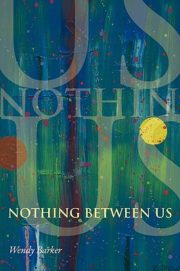 WB: These poems do feel like a kind of summa. And I don’t know that I have anything more to say about my own university teaching experiences, for now, at least. And Nothing Between Us describes my years in West Berkeley teaching ninth graders. But there’s one poem I’ve been struggling with and just can’t make work. It has to do with my experiences during my first year of teaching, in 1966, at Saguaro High School in Scottsdale, Arizona, when a group of bright juniors would stay after school and we’d all read e. e. cummings out loud together. What we didn’t realize was that our brand new high school bordered on an Indian reservation, whose kids couldn’t even live with their own parents, but were boarded in Phoenix at the “Indian School” and taught to forget their own language and customs. I want to keep revising this poem, finish it at some point.
WB: These poems do feel like a kind of summa. And I don’t know that I have anything more to say about my own university teaching experiences, for now, at least. And Nothing Between Us describes my years in West Berkeley teaching ninth graders. But there’s one poem I’ve been struggling with and just can’t make work. It has to do with my experiences during my first year of teaching, in 1966, at Saguaro High School in Scottsdale, Arizona, when a group of bright juniors would stay after school and we’d all read e. e. cummings out loud together. What we didn’t realize was that our brand new high school bordered on an Indian reservation, whose kids couldn’t even live with their own parents, but were boarded in Phoenix at the “Indian School” and taught to forget their own language and customs. I want to keep revising this poem, finish it at some point.
AF: Were you able to dip into autobiography more deeply because your memories were framed by the work of literature you were teaching, or the class you’re describing? Can you cite an example?
WB: Often the work we were discussing in class brought back memories. For instance, in “The Morning After Our Second Ecopoetry Class,” I describe how reading and discussing Christopher Manes’ essay “Nature and Silence” helped to recall a night at Tortuguero hovering over a four-hundred-pound green sea turtle dropping her eggs into the sand while we watched, awed, and utterly silent. But the best example of the way a class discussion caused memories to leap into my mind—and uncomfortably so, interfering with my classroom concentration—would be “In the Seminar: Trying to Launch Passage to India.” Teaching Forster’s brilliant novel forced me to confront some experiences of which I’m not proud. Not only, as I say in the poem, was I “dealing with my own Anglophobia,” since my British mother was a bit of a snob, but I was also flung back to my first time traveling in India. Invited to give talks in various cities, I was traveling with Punjabi friends, and, with a rigorous travel schedule, I began to feel utterly overwhelmed. I became absolutely exhausted, sick of being singled out as the only tall, pale-skinned, gray-blond-haired person in sight, and ashamed of my middle-class Americanness, my lack of flexibility and resilience. So the teaching of Forster’s novel forced me to delve into some pretty uncomfortable and unflattering views of my own limitations.
AF: Do you have a favorite poem here? If so, why?
WB: This is a hard question to answer. I guess if I had to choose, I’d say the opening poem, “I Hate Telling People I Teach English,” and the closing poem, “The Last Time I Taught Robert Frost.” And each for entirely different reasons. “I Hate Telling People” began right after I had returned from a bone scan, and the first lines describe what had actually happened. It felt so good to write those beginning lines—cathartic, really, and I just kept going. As I continued drafting the poem, I began laughing out loud, really out loud. I’d never laughed while writing a poem, but with that one, I was howling! And most of the poem came directly from actual experiences. I can’t count the times I’ve had people tell me they have a novel already written in their head, but just need “someone like me / to work it up.” The ending of the poem, however, I fictionalized somewhat. No dentist ever recited Chaucer’s Prologue to The Canterbury Tales to me “while I lay back in his chair, open-mouthed, pierced to the root.” It was a donor to our Creative Writing Program who did, over the phone one afternoon while I was in my office. But deciding to make it a dentist led to the final line.
The Frost poem also came directly from an experience, but, as with so many of the poems in the collection, from a student’s comment in class. At the time, “lovely” was a word only just beginning to be used colloquially, and the Olivia in the poem was a very “with it” grad student. Today, my shock about hearing Frost’s poems described as “lovely” may seem a bit odd, since, I admit, I’ve even started using the word myself at times.
But teaching Frost’s “Stopping by Woods on a Snowy Evening” has always been emotionally laden for me, probably because it was one of the poems my father, who in most ways was emotionally very distant, would recite after dinner. As a girl, I would sit listening on the sofa, rapt, and literally shiver. When he was dying, I wanted to recite that poem to him because I knew it was his all-time favorite, but for some reason, I just couldn’t—uncharacteristically, I became speechless. So teaching that poem, and reciting it with students always provides a kind of healing for me. I guess I want to feel we’re saying it aloud for my father, who really gave me poetry.
AF: Why do you think there are so few good poems about teaching, when so many poets teach? Or am I wrong, are there a lot of good poems on teaching I just haven’t found?
WB: Strange, isn’t it? You’d think that, since so many poets also teach, we’d have anthology after anthology of poems about the classroom. But I’m not aware of many other poems that reflect on teaching. I know David Kirby has mentioned experiences with students at times, and Kevin Clark has. And you have! There must be others. Let’s find them!
AF: Let’s say you have three strands of narrative going in most of these: the students’ reaction to the literary work, the speaker’s own associations and memories, and the story in the literary work being studied . . . what do you think each strand contributes to the others? Did you ever work on a poem and say, Oh, I didn’t include one of these and I should put it in . . . or weren’t you conscious of this as a kind of informal requirement?
WB: I was never conscious of such a requirement, though most often, the students, the literary work, and something of my own thoughts or experiences all worked their ways into a poem. But there are poems in the collection that don’t include all three strands. For instance, although “Truth, Beauty, and the Intro Workshop” alludes briefly to Milton, Keats, Auden, and Lawrence, the poem really focuses on my reaction to the “kid with the scarab tattoos” and my realization that I may have been wrong in my advice to him, that I too shared something of his longing for old-school beauty. “His Eyelashes Are Not Tarantulas” is a poem that explores my own embarrassed over-reaction to an incredibly handsome, charming male student’s silly poem. And “Rereading The Golden Bowl” only mentions teaching in passing toward the poem’s end, but begins by emphasizing how, actually, I would never want to teach this brilliant book.
AF: You end the poem “Coming to Cather,” about teaching My Antonia, with the phrase “and finally, I hear the symphony, whole again.” I think what moves me most about this book is the sense of a poet who is now in a position to take in the “whole” of her life as a kind of symphony, that is, as a gathering of past and present. Does a poem like this begin with memories of the ex-husband trying to farm, the “bad weather chewing on the marriage.” Or is it rereading Cather, and teaching the book, that invites the memories? I ask this because sometimes the recollections are so painful and strong––like the exhilaration and, at the same time, the feeling of self-degradation of the Italy trip in your youth that comes back in “Why I Dread Teaching The Sun Also Rises” or the anguish of your father’s last days in the ICU in “The Last Time I Taught Robert Frost” or even being taunted in second grade in “Waking Over Call It Sleep.”
WB: “Coming to Cather” got its start while teaching Cather’s novel. As I say in the poem, the students adored the book. But what really caused the poem to take off was hearing Mahler’s Fourth Symphony performed by the San Antonio Symphony, and then talking afterward with friends, one of whom described his own Czech immigrant ancestors who, in central Texas, built their own violins, violas, and cellos and had their own string quartet in central Texas. In the poem I change my friend’s name to “Charlotte,” making him one of the students.
But Mahler’s Fourth has always moved me to the core. And for years it was almost too painful for me to hear it, since it roused memories of my former marriage. Larry Barker was a brilliant musician and choral director, with a gorgeous tenor voice. And the modest acreage he and I bought when we first moved to Texas was beautiful—with grasses not unlike those of Cather’s Nebraska. However, I fictionalized the husband in the poem—Larry Barker didn’t play the viola, but sang, and wherever we lived, our house resonated with his music.
So writing the poem allowed, as you so wisely intuit, a real healing, although it necessitated a plunging into a new level of grief, which led to a kind of letting go. The ending of the poem was terribly difficult to get right. But finally, the poem seemed “whole.”
Your question is incredibly astute, and is helping me realize just how much pain I worked through in writing these poems. A few other poems refer to the anguish of incidents from my former, thirty-six-year marriage, though I fictionalized those episodes even more than I fictionalized my ex-husband in the Cather poem. But certainly by letting the past inform the present, in weaving the current experiences in the classroom together with often painful memories, I was able somehow to let go, to find a kind of peace. . . . So yes, all the strands of the weave, past and present, all the notes of the “symphony,” all the instruments, from the violins and flutes to the kettle drums. Major keys and minor.
AF: Finally, can you tell me how this book is related to aging? I’m thinking of the dilemma you describe in “I’m Not Sure the Cherry is the Loveliest of Trees” of whether to treat old age as a time to grab all the experiences you still can (like the woman who “traveled seven continents/ compiling a life list of eight thousand birds”) or a time to grab on to what is so familiar, and so loved, “the Mexican persimmon” in the yard, you “can’t begin to wrap your arms around”? In a way, both the teaching and the memories are like the persimmon, no? Something you can only try to grasp. Though, in another way, the hundreds of students, maybe thousands after so many years, are like the birds . . . always something new! Anyway, what’s your take on this?
WB: Once again, your insights are right on the money. I think the book is very much about aging. In 2008, when the poems that comprise the book really took off, I had just been named “Poet-in-Residence” at the University of Texas San Antonio, and had been granted a much-reduced teaching load (at a reduced salary, I must add). I was four years away from turning seventy, and feeling I should fully retire before long. As the poems progressed, I began to feel I was writing my way out of teaching and into retirement.
But in 2012, when I finished writing (but not revising) all the poems, I turned seventy, and realized I didn’t want to retire after all, that I would miss the students terribly. (I talk about this especially in “Next-to-Last Week in the Senior Workshop.”) So I teach one class a year now, thanks to our mensch of a dean and our department chair.
I see I’m avoiding your question. I know I can’t travel to seven continents any more. Maybe not even two or three. It’s one of the realities of aging, knowing that one’s energies are not what they once were, and that the time one has left is limited, and wanting to spend it carefully. (Interesting that I switched suddenly to using the impersonal and more formal “one” rather than “I”. . . .)
And yes, that exquisite Mexican Persimmon tree with its intricately intertwined branches—even that familiar tree holds complexities I will never grasp. Just as I can never truly know—intimately—any of the students, or any literary work as thoroughly as I’d like.
Perhaps “I’m Not Sure the Cherry Is the ‘Loveliest of Trees’” is getting at the realization that I’m no longer so interested in seeing far-away places superficially, but getting to know what’s closest as deeply as I can.
And oh, yes, the students are like the birds! Coming and going in my life, entering it for a semester and then gone. And I have to let go. Let go and let go and let go. As Daniel says in “In Our Class on Roethke,” “It’s hard to imagine / investing so much in something that won’t last.” “We learn,” the poem ends, “by going, as we go.” Pun intended.
AF: Thanks, Wendy.
WB: And gigantic thanks to you, Alan, for doing the interview!
Click here to purchase One Blackbird At A Time at your local independent bookstore

Click here to purchase Nothing Between Us at your local independent bookstore

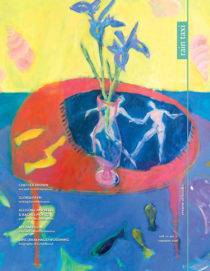 I’m a Minneapolis artist and I love strange beauty. Doll heads and stage illusions, bar patrons, wrestlers and bodybuilders, pinups and mugshots, baseball players, nightclub performers and street bystanders, sideshow freaks and circus performers have all been my subjects.
I’m a Minneapolis artist and I love strange beauty. Doll heads and stage illusions, bar patrons, wrestlers and bodybuilders, pinups and mugshots, baseball players, nightclub performers and street bystanders, sideshow freaks and circus performers have all been my subjects.

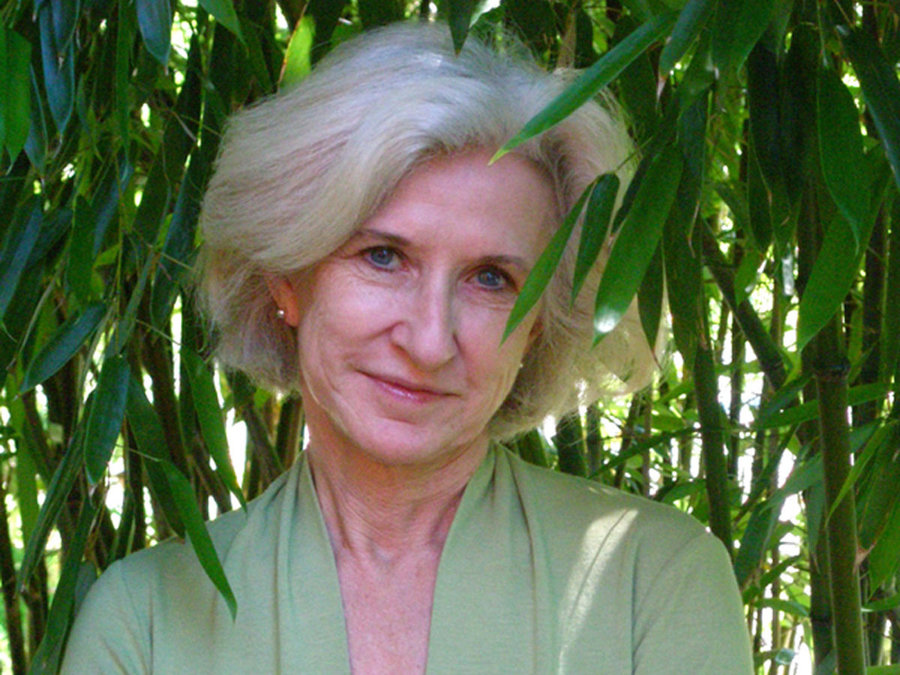 by Jill Magi
by Jill Magi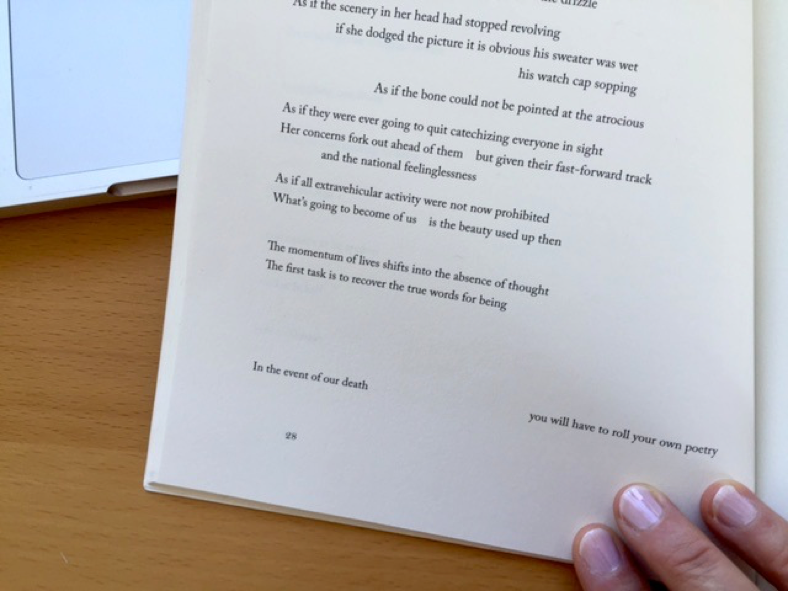
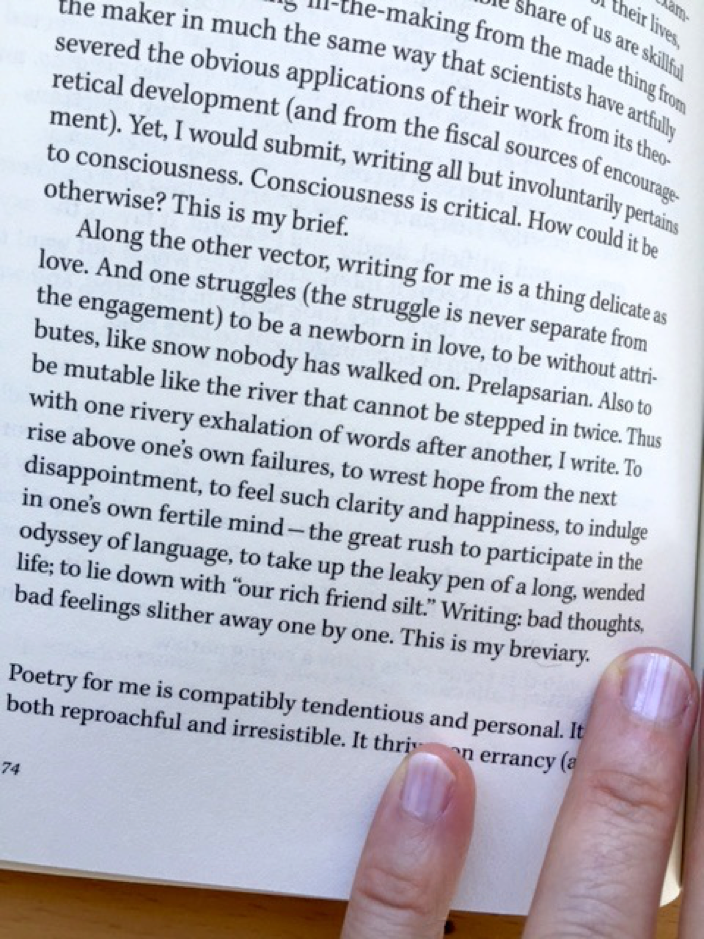
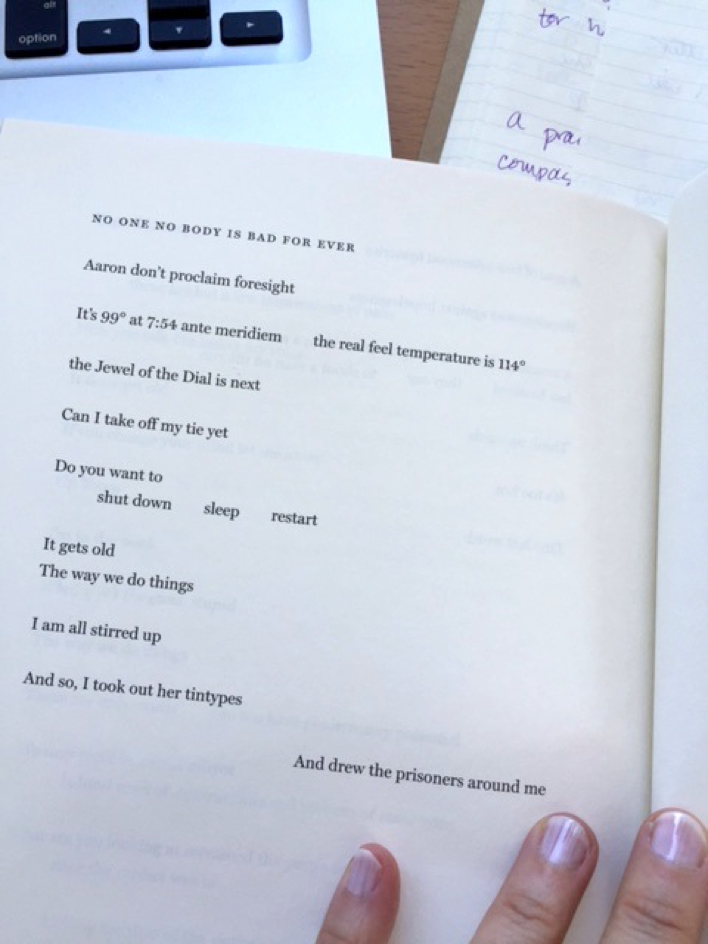
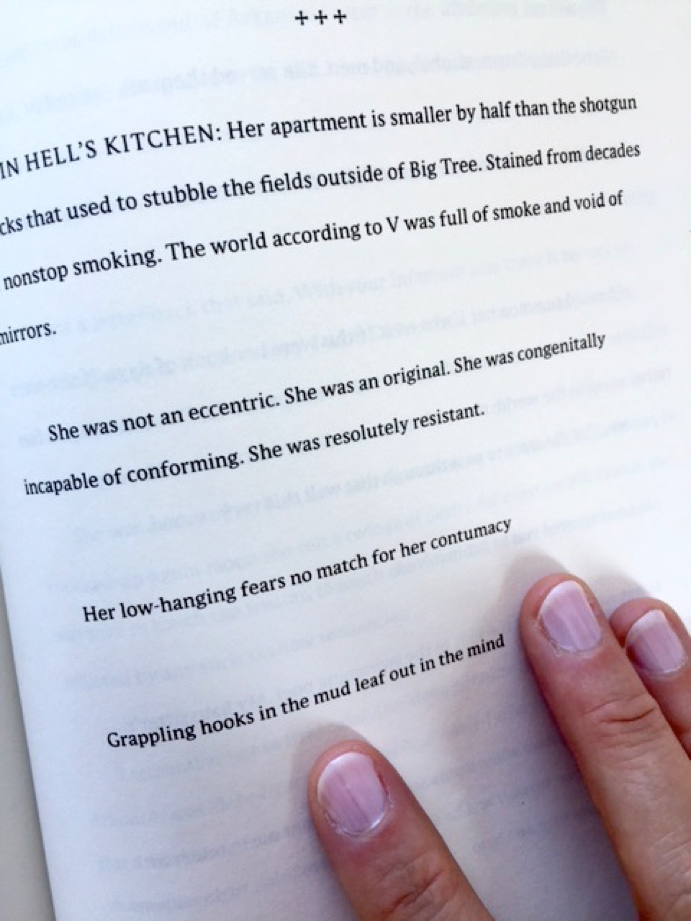
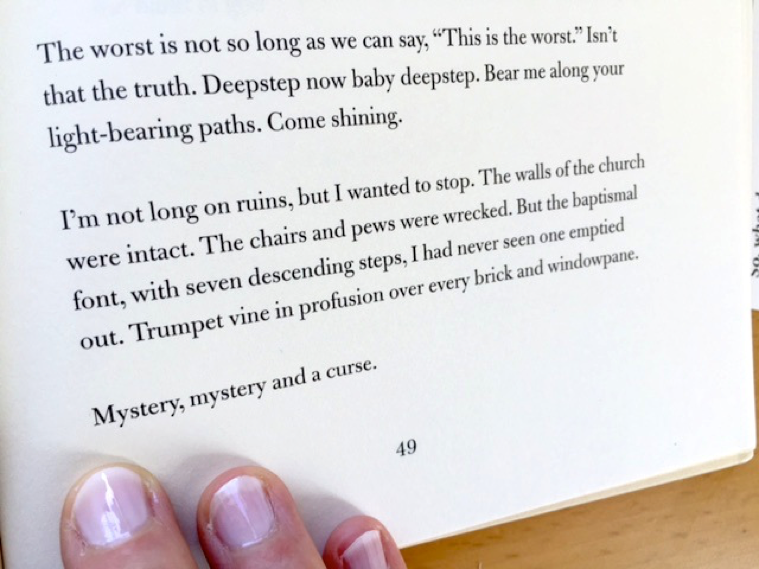
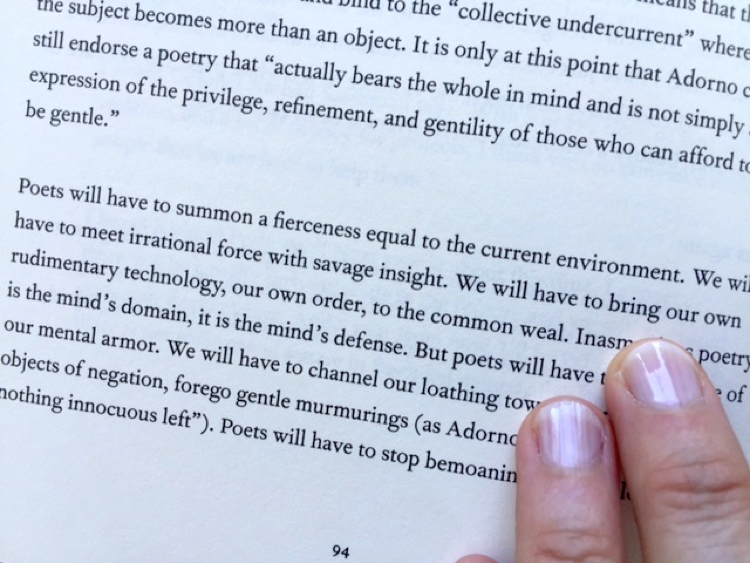
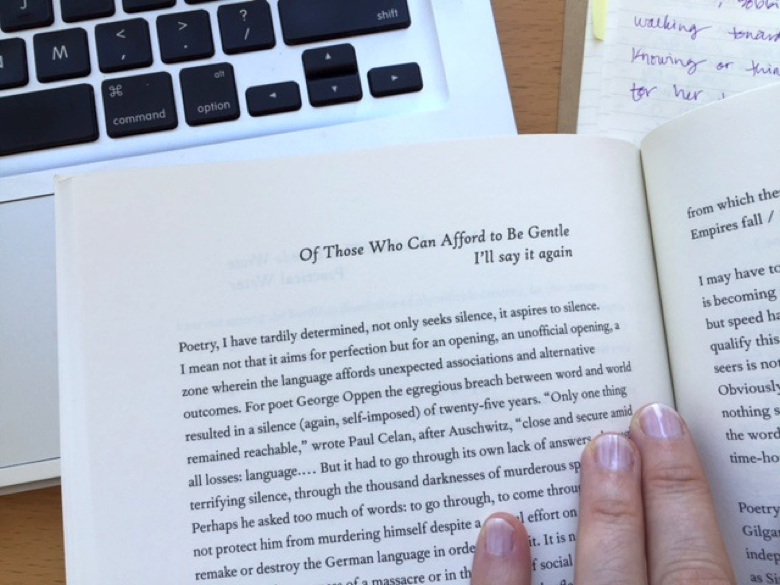



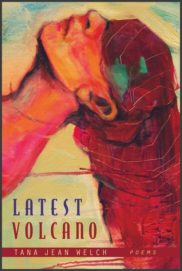 Tana Jean Welch
Tana Jean Welch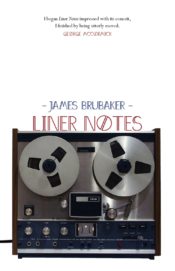 James Brubaker
James Brubaker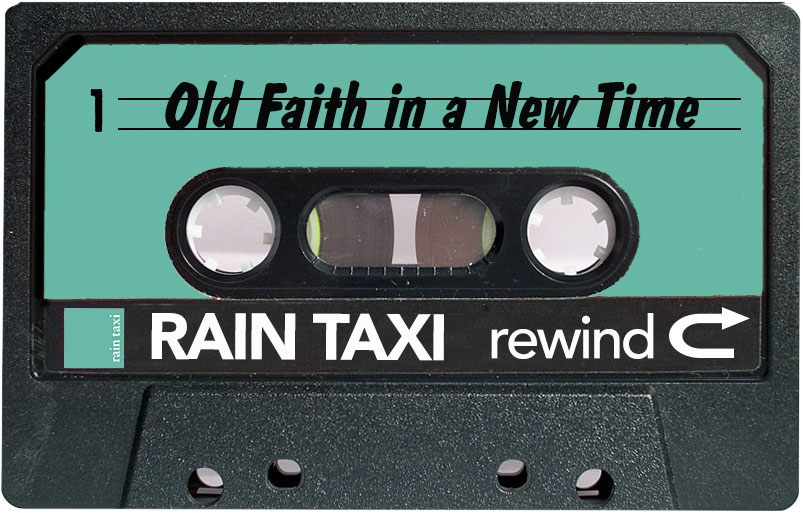
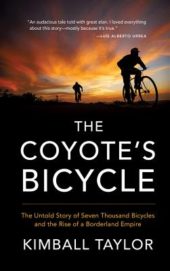
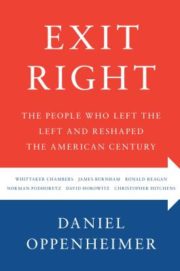
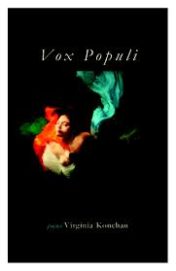 Virginia Konchan
Virginia Konchan